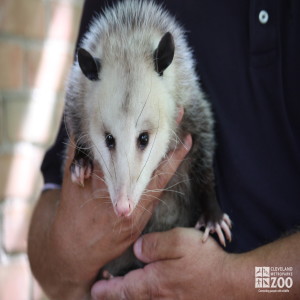Virginia Opossum
[Didelphis virginiana]

Opossums have cat-sized bodies with the tail usually shorter than the combined length of head and body. The body can be gray, black, reddish, rarely white. The head is whitish with darker body color, ears are black or black with paler tips. Lower legs are black with feet and toes being black and white.
Location: Animals Formerly at Zoo
Share:
Range
The opossum's range includes the west coast of the United States, southern Canada to northern Costa Rica, the Great Plains of the United States to the eastern coast, the east and west areas of Mexico, but not the central. Their home range is 31-96 acres.
Habitat
Opossums inhabit grasslands to forest-also farms, towns and cities.
Conservation Status
Least ConcernPrimary Threats
Gestation
Gestation is approximately 13 days.
Litter
Opossums can have up to 56 born with only 1-15 attaching to mammae. Usually about 7.
Behavior
In fear, Opossums may “play dead” for up to 4 hours on their side with eyes and mouth open, tongue hanging out, emitting both a green fluid from anus and a putrid odor. This opossum does not hibernate.
Reproduction
Opossum females carry the young for approximately 2 weeks before they are born. The newborn must crawl to a nipple. The nipple swells and the baby will stay on it for approximately 2 months. At about 3 months the babies emerge from the pouch.
Wild Diet
Depends on location and season: fruit, insects, small vertebrates, carrion, garbage.
Zoo Diet
Low-cal cat food - fish, vegetables, fruit.
